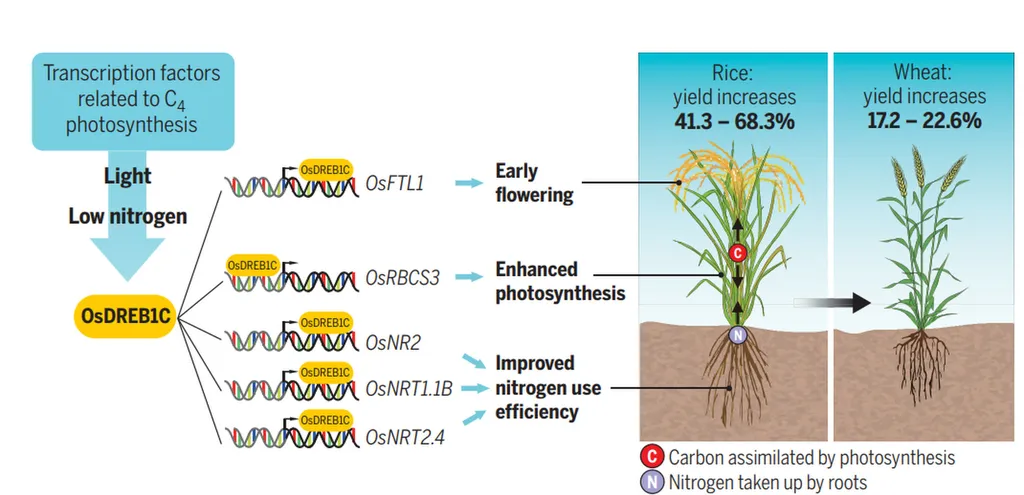In the heart of China, researchers have uncovered a genetic secret that could reshape the future of rice cultivation and, by extension, the energy sector. A study led by Ruhui Wu from the Rice Research Institute at Southwest University has identified a key gene, SAO, that plays a pivotal role in regulating aerial organ development in rice. This discovery, published in the journal *Rice Science* (translated from its Chinese name, *Dami Kexue*), opens new avenues for enhancing rice yields and potentially contributing to bioenergy production.
Rice, a staple food for over half of the world’s population, is not just a dietary cornerstone but also a potential source of bioenergy. The SAO gene, as Wu and his team have found, influences the growth and development of rice plants’ aerial organs—stems, leaves, and panicles. “Understanding how SAO regulates these processes is crucial for developing high-yielding rice varieties that can meet the growing global demand for food and bioenergy,” Wu explained.
The implications of this research extend beyond the fields. Rice straw, a byproduct of rice harvesting, is often burned, contributing to air pollution and health issues. However, it also holds promise as a feedstock for bioenergy. By optimizing the growth of aerial organs through genetic modification or selective breeding, farmers could produce more rice straw without compromising grain yield. This dual-purpose approach could help address energy needs while reducing environmental pollution.
Moreover, the study’s findings could pave the way for developing rice varieties better adapted to changing climates. As the world grapples with the impacts of climate change, crops that can thrive in diverse and challenging environments will be invaluable. “Our research is not just about increasing yields; it’s about creating resilient crops that can withstand environmental stresses,” Wu noted.
The discovery of the SAO gene’s role in rice development is a testament to the power of modern agricultural science. It underscores the potential of genetic research to drive innovation in both food security and renewable energy. As the world seeks sustainable solutions to meet its energy demands, this research offers a glimpse into a future where agriculture and energy sectors converge to create a more sustainable and resilient world.
The study, published in *Rice Science*, is a significant step forward in our understanding of rice genetics and its broader implications. It highlights the importance of continued investment in agricultural research and the potential benefits it can bring to society. As we stand on the brink of a new era in agriculture, the work of researchers like Ruhui Wu and his team at Southwest University serves as a beacon of hope and innovation.

